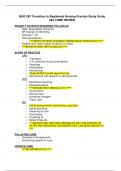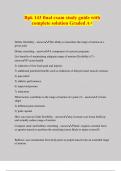Class notes
Administrative Law and Market Regulation: Complete Course Notes
- Course
- Institution
When it comes to Administrative Law and Market Regulation, the most important thing is to have a good understanding of the different theories and models studied throughout the course. These reviewed and revised notes provide in depth explanations of all lectures, as well as answers and notes from e...
[Show more]












